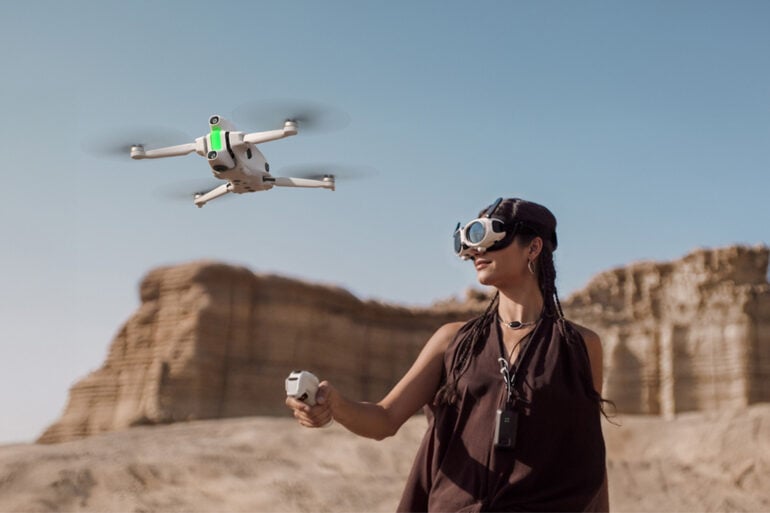Insta360 making drones, and DJI making 360-degree action cameras: the world has turned upside down. After a brief tease last month, Insta360 fully lifted the lid on the Antigravity A1, an 8K 360-degree camera drone from a new spin-off brand. But it might not get off the ground in Australia
The drone uses a dual-lens array to capture video footage all around it. What’s referred to as “advanced stitching algorithms” removes the drone from getting in the way of the visuals. It’s quite a light drone, weighing just 249g.
Based on the official announcement and debut footage, a first-person perspective is core to the Antigravity A1 experience. Insta360 showed off the Vision goggles, a headset that the pilot wears while holding a motion-enabled controller, as the sole form of control.
That’s where the drone could find trouble in Australia. According to the Civil Aviation Safety Authority, drone pilots must always keep the device within direct eyesight. Using goggles to fly in a first-person perspective is only permitted with specific approval.
It’s not known whether the Antigravity A1 supports flying without using its goggles. All the footage shown so far only includes people using the goggles — including some kind of reverse passthrough feature that shows any onlookers what you can see.
Goggles-free flight would be the easiest way to bypass Australia’s first-person restrictions, so we’ll have to wait and see how the drone operates when it launches in January 2026.
Neither Insta360 nor its Antigravity offshoot have confirmed any pricing details. For reference, DJI’s Avata 2 first-person drone starts at $1,499. Considering the A1 uses new 360-degree tech, expect to pay more if it comes to Australia.



